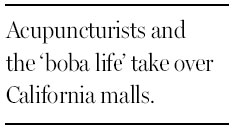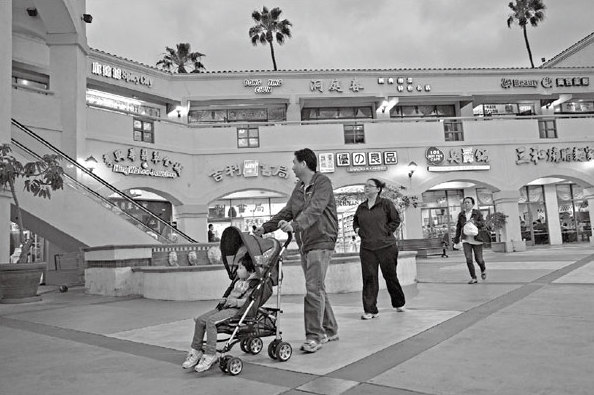A new suburban dream emerges, born of Asia and California
Updated: 2013-05-26 06:02
By Jennifer Medina(The New York Times)
|
|||||||||
|
Asians have become a majority in more than half a dozen cities in the San Gabriel Valley. A shopping center, where signs have Chinese characters. Monica Almeida / The New York Times |
SAN MARINO, California - Beneath the palm trees that line Huntington Drive, named for the railroad magnate who founded this Southern California city, hang signs to honor families who have helped sponsor the centennial celebration here this year. There are names like Dryden, Crowley and Telleen, families that have lived here for generations. But there are newer names as well: Sun, Koo and Shi.
A generation ago, whites made up roughly two-thirds of the population in this rarefied Los Angeles suburb, where most of the homes are worth well over $1 million. But Asians now make up over half of the population in San Marino.
The transformation illustrates a drastic shift in California immigration trends over the last decade, one that can easily be seen all over the area: More than twice as many immigrants to the United States' most populous state now come from Asia as from Latin America.
And the change here is just one example of the ways immigration is remaking America. The number of Latinos has more than doubled in many Southern states, including Alabama, Georgia and North Carolina, creating new tensions. Asian populations are booming in New Jersey, and Latino immigrants are reviving small towns in the Midwest.
In cities in the San Gabriel Valley - as well as in Orange County and in Silicon Valley in Northern California - Asian immigrants have become a dominant cultural force in places that were once largely white or Hispanic.
"We are really looking at a different era here," said Hans Johnson, a demographer at the Public Policy Institute of California who has studied Census data. "There are astounding changes in working-class towns and old, established, wealthy cities. It is not confined to one place."
Asians have become a majority in more than half a dozen cities in the San Gabriel Valley in the last decade, creating a region of Asian-dominated suburbs that stretches for nearly 50 kilometers east of Los Angeles.
Many of the immigrants come here from China and Taiwan, where they were part of a highly educated and affluent population. They have eagerly bought property in places like San Marino, where the median income is nearly double that of Beverly Hills and is home to one of the highest-performing school districts in the state. The local library now offers story time in Mandarin.

But the wealth is not uniform, and there are pockets of poverty in several of the area's working-class suburbs.
There are countless stores that display signs in Mandarin, sell restaurant supplies and Chinese herbs, or advertise acupuncture services. But perhaps the most common storefront is the boba tea shop, where young patrons spend hours drinking cold milk tea with jellylike tapioca balls. Nearly every one of the region's hundreds of malls boasts a cafe - or two - offering a dizzying number of variations on the sweet drink.
Andrew and David Fung, who grew up in Seattle, were surprised to see the pervasiveness of Chinese and Taiwanese culture in the San Gabriel Valley.
After moving to the area a couple of years ago, the Fung brothers created several hip-hop videos celebrating what they termed the "boba life," to embrace the area where, as their lyrics explain, "kids drink more milk tea than liquor."
"People here think it's normal, hanging out to drink boba all day long, but this culture doesn't exist everywhere, and we're trying to tell them to embrace it, to own it," said David Fung, 26.
The Fung brothers have helped create a local ethnic pride unimaginable a generation ago, said Oliver Wang, a professor at California State University, Long Beach.
"It wasn't cool to be Chinese or cool to be Asian," he said.
But the growth has not come without some backlash. While there is rarely overt tension in the area these days, there is a history of clashes over English-only ordinances, and some people still speak in hushed tones about Chinese immigrants taking over the region.
The New York Times
(China Daily 05/26/2013 page10)
